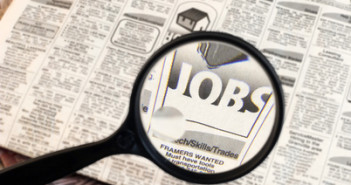The number of US Non-Farm Payrolls rose by 117K in July 2011. This is slightly better than official expectations that stood on a gain of around 90K. The unemployment rate also surprised with a slide to 9.1%, exceeding expectations of an unchanged value at 9.2%.
The dollar rises against the safe haven currencies and drops against the euro in the initial reaction. This is a classic “risk appetite†reaction. Eventually, the euro’s gains are erased. Commodity currencies are on the rise, safe havens are falling and the euro and the pound return to the same place after some wild trading.
Last month’s Non-Farm Payrolls were revised to the upside – a gain of 46K instead of 18K that was initially reported. Average Hourly Earning also beat expectations with a rise of 0.4%, compared with a rise of 0.2% that was expected.
Government jobs fell by 37K, and the private sector saw a nice increase of 154K jobs, better than reported by ADP on Wednesday.
The real unemployment rate, which includes people that are too discouraged to search for a job (U-6), slid down from 16.2% to 16.1% in July. This awful figure completes the general picture of “it could be worseâ€. The situation is still bad, just not as horrible as feared.
Updates on movements
12:32 GMT USD/CHF is getting close to 0.77. USD/JPY is approaching 79, but after an initial jump, they ease.
12:34 the euro went as high as the resistance line at 1.4220, and is now retreating to support at 1.4160.
12:38 Moves are more limited now, with the euro erasing its gains.
12:45 EUR/USD falls intensify, while dollar’s gains against the yen and franc are maintained in a very steady manner. GBP/USD joins the euro with its falls.
12:47 USD/CAD drops on the news – good US figures are good for Canada, which posted mixed numbers earlier. USD/CAD dropped up to the 0.9750 support line, and recovered.
12:49 Precious metals are lower (less need for these kind of safe havens) while oil is up (a better global economy needs more oil).
12:52 The classic risk appetite reaction is now more muted. The dollar is stronger against the safe haven yen and franc, and also the vulnerable euro and pound. It is stable and slightly falling against the Aussie and the kiwi (which initially jumped), and retreats against the loonie.
13:15 EUR/USD is up again. The effect of the Non-Farm Payrolls begins fading away. The debt crisis and hopes about possible resolutions continue to dominate the pair.
Wrap up: All in all, the report came out better than expected, especially with nice hiring in the private sector. This helps global markets stabilize, and possibly end the week on a higher note – this week was awful. Perhaps this is a small pause before the next round.
Background
Many recent economic figures were very disappointing recently, suggesting that the US may slip into a recession. On the other hand, job related indicators for July still point to job growth, and this is what formed the positive expectations.
the euromade some recovery attempts before this publication. It was hit by Trichet’s hesitant actions yesterday, but managed to recover on hopes that the ECB would eventually act. The stock market and commodity crash ignited by Trichet joined the already existing fears.
Risk aversion rules the markets: this means that only the Japanese yen and the Swiss franc can provide a normal reaction to data, while other currencies might move in the opposite direction.
90 minutes before the publication of the NFP, Canada released its own employment numbers – they showed a weak gain of 7K but a surprisingly low unemployment rate of 7.2% – something the US can envy.
It’s important to remember that the NFP publication has rules of its own. If you’re trading this event, please read the 5 notes for Non-Farm Payrolls trading.



